Beware of misleading statistics
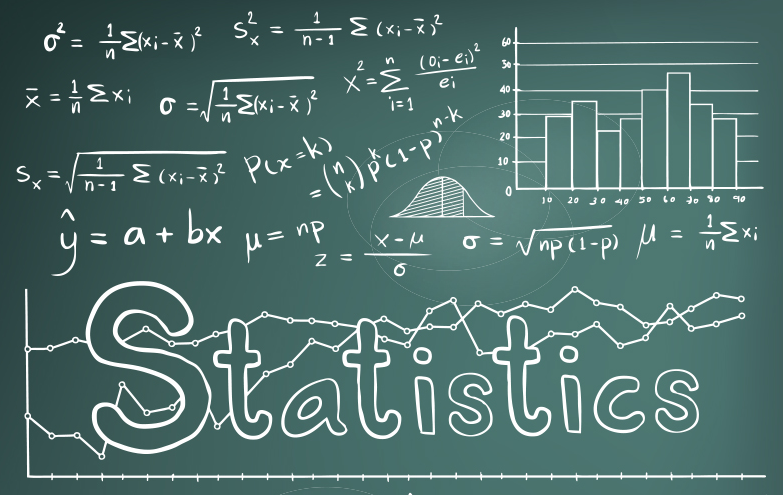
There are many myths and misleading information on the stock market.
Something that is misleading is that we lose a lot of returns if we miss the best trading days because we try to time the market. This is something you often hear from players who make money on inflows and want to avoid outflows.
Below we see a graph from Charles Schwab that illustrates what happens if we try to time the market. This is misleading information.
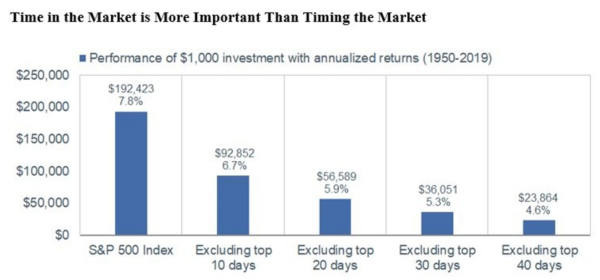 Let me explain what I mean. First, let's look at the returns if we miss the best trading days. As we can see in the graph, we lose a lot of returns.
Let me explain what I mean. First, let's look at the returns if we miss the best trading days. As we can see in the graph, we lose a lot of returns.
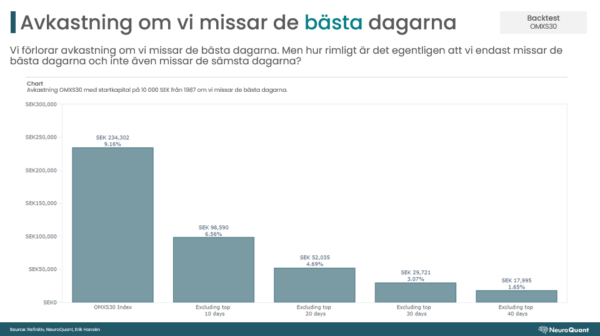 But how reasonable is it that we would only miss the best days and not also miss the worst days? What Benoit Mandelbrot noted and what we have also noted is that volatility clusters. The best days tend to coincide with the worst days.
But how reasonable is it that we would only miss the best days and not also miss the worst days? What Benoit Mandelbrot noted and what we have also noted is that volatility clusters. The best days tend to coincide with the worst days.
 Below we see what the return would look like if we were to avoid major negative days. Of course, unreasonable in practice. But it is also unreasonable that we would only miss the best days and not the worst.
Below we see what the return would look like if we were to avoid major negative days. Of course, unreasonable in practice. But it is also unreasonable that we would only miss the best days and not the worst.
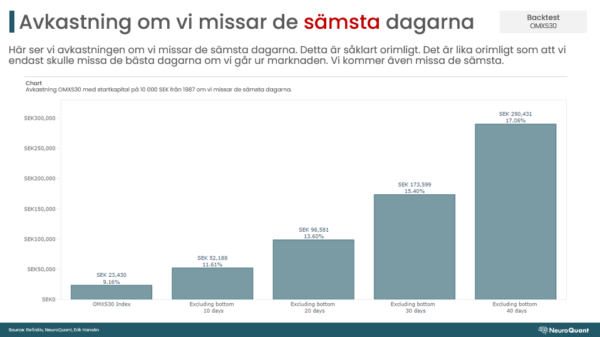 Below we see the return if we miss both the best and the worst days. This is significantly more likely than if we only miss the best days. No major difference compared to buy & hold. Maybe we have slept better too. So no catastrophe on the return that is often painted.
Below we see the return if we miss both the best and the worst days. This is significantly more likely than if we only miss the best days. No major difference compared to buy & hold. Maybe we have slept better too. So no catastrophe on the return that is often painted.
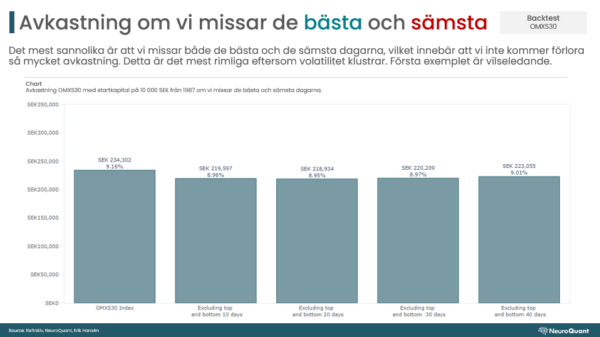 For us, timing is not about hitting a few peaks or troughs without managing risk. We don't want to give back too much of our capital when the market is in weaker periods. We are very long-term and follow the larger cycles, driven by changes in growth and inflation. With the help of a repeatable process, we know when to accelerate and brake. Our goal to help you gain a greater understanding of the market and achieve your investment goals.
For us, timing is not about hitting a few peaks or troughs without managing risk. We don't want to give back too much of our capital when the market is in weaker periods. We are very long-term and follow the larger cycles, driven by changes in growth and inflation. With the help of a repeatable process, we know when to accelerate and brake. Our goal to help you gain a greater understanding of the market and achieve your investment goals.